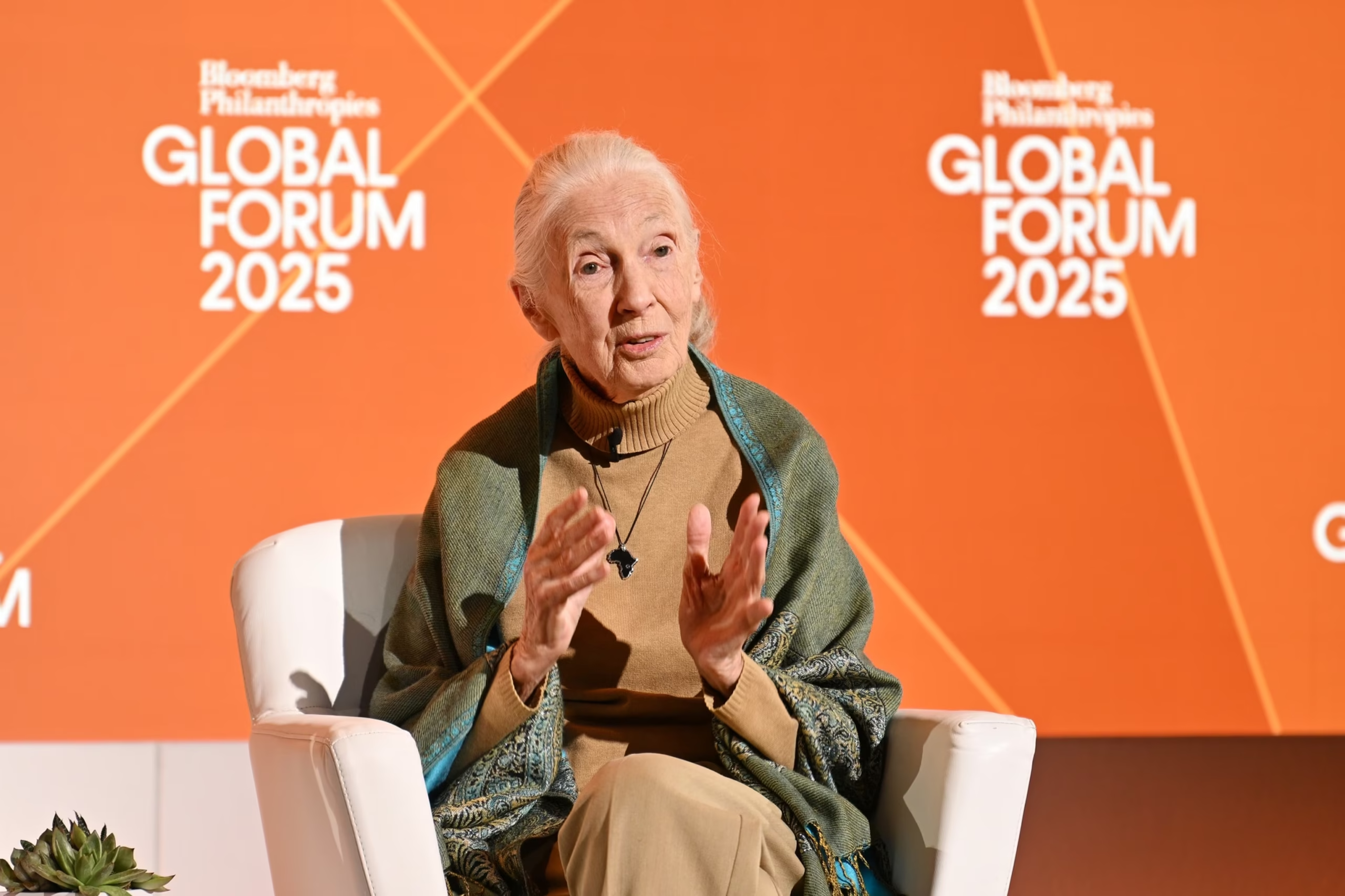Jane Goodall, the renowned primatologist and conservationist who revolutionized the study of primates, has died at the age of 91. She passed away of natural causes in California while on a speaking tour of the United States. Goodall’s extensive research on chimpanzees transformed how the world understands animal behavior and emotions, highlighting the similarities between chimpanzees and humans, such as tool-making, unique personalities, and complex social behaviors. She was also a passionate advocate for environmental conservation and animal welfare, founding the Jane Goodall Institute and the Roots & Shoots youth program. Her legacy as a trailblazer for women in science and a tireless protector of the natural world has been celebrated globally.
What were Jane Goodall’s major scientific discoveries
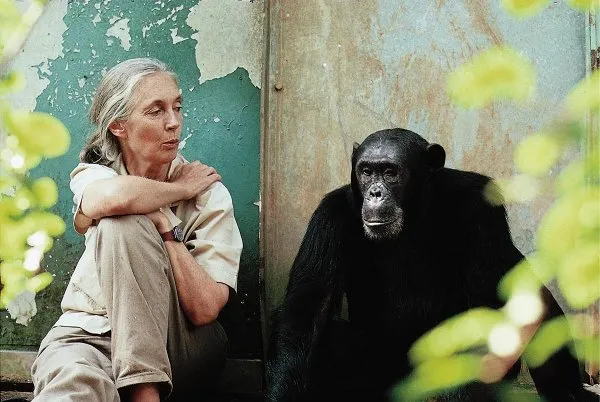
Jane Goodall’s major scientific discoveries fundamentally transformed the understanding of chimpanzees and their behavior, impacting the broader view of human evolution and animal cognition. Some of her key discoveries include:
- Tool Making and Use: Goodall observed chimpanzees making and using tools, such as modifying twigs to extract termites from mounds. This was the first evidence that an animal other than humans fabricated tools, challenging the notion that tool use was uniquely human.
- Omnivorous Diet: Contrary to previous beliefs that chimpanzees were herbivores, Goodall documented them hunting and eating meat, including bush pigs and other small mammals.
- Complex Social Behavior: She revealed that chimpanzees have complex social interactions, including hugging, kissing, and forming strong family bonds. She noted that chimpanzees display compassion, such as comforting and adopting orphaned individuals.
- Warfare and Territoriality: Goodall discovered that chimpanzees engage in organized territorial patrols and aggressive conflicts with rival groups, sometimes killing members of other tribes, resembling warfare behavior.
- Learning Maternal Behavior: She observed that maternal behavior in female chimpanzees is learned from their mothers rather than instinctual.
These discoveries revolutionized primatology by showing that many behaviors previously considered uniquely human are shared with chimpanzees, reshaping the understanding of animal intelligence and social complexity.
How did Goodall show chimpanzees make and use tools
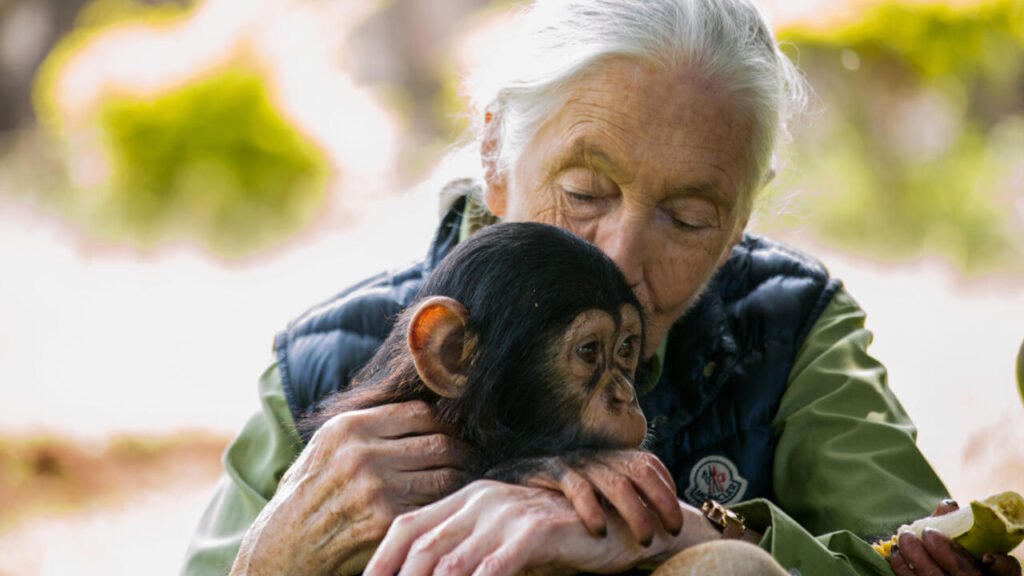
Jane Goodall showed that chimpanzees make and use tools through her groundbreaking observations at Gombe Stream National Park in Tanzania. In October 1960, she witnessed a chimpanzee bend a twig, strip off its leaves, and use it as a tool to “fish” termites out of a termite mound. This was the first recorded evidence that animals other than humans made and used tools, directly challenging the prevailing scientific belief that tool-making was a unique human trait. Goodall continued to observe other types of tools chimpanzees used, such as leaves as sponges to soak up water, displaying advanced problem-solving skills and cognitive abilities. Her findings led the anthropologist Louis Leakey to famously declare, “Now we must redefine ‘tool,’ redefine ‘man,’ or accept chimpanzees as human”
Describe the methods Goodall used to record tool use
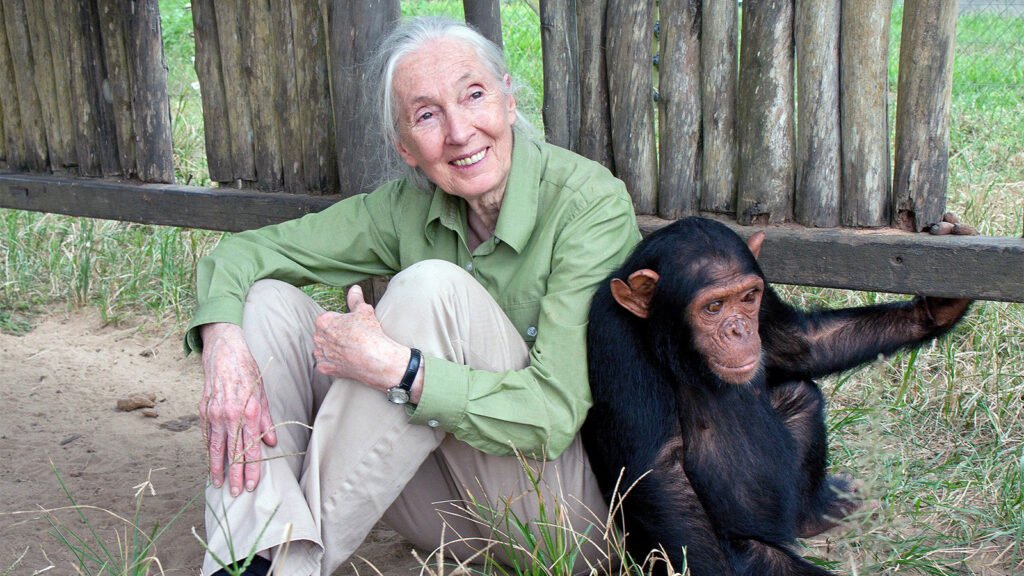
Jane Goodall used a method of deep, immersive, naturalistic observation to record chimpanzee tool use. She spent long periods living among wild chimpanzees in their natural habitat at Gombe Stream National Park, observing their day-to-day behaviors closely and systematically. She meticulously documented detailed handwritten notes on their actions, including how chimpanzees made, modified, and used tools such as twigs to fish termites out of mounds and leaves as sponges for drinking water.
Goodall’s approach was notable for its patience and attentiveness, allowing chimpanzees to behave naturally without interference. She emphasized the importance of prolonged and repeated observations to capture the breadth of chimp behavior accurately. Her notes spanned multiple aspects of chimp life, social interactions, and tool use, allowing her to identify patterns and cultural transmission of behaviors. This immersive, longitudinal study strategy was revolutionary in ethology for the depth and detail it provided in understanding animal cognition and culture.
Her methods combined careful direct observation, systematic note-taking, and a respectful, non-intrusive presence among the animals—paving the way for a more empathetic and comprehensive study of primate behavior.
‘Hero for the Planet’: Leonardo DiCaprio Writes Tribute to ‘Dear Friend’ Jane Goodall
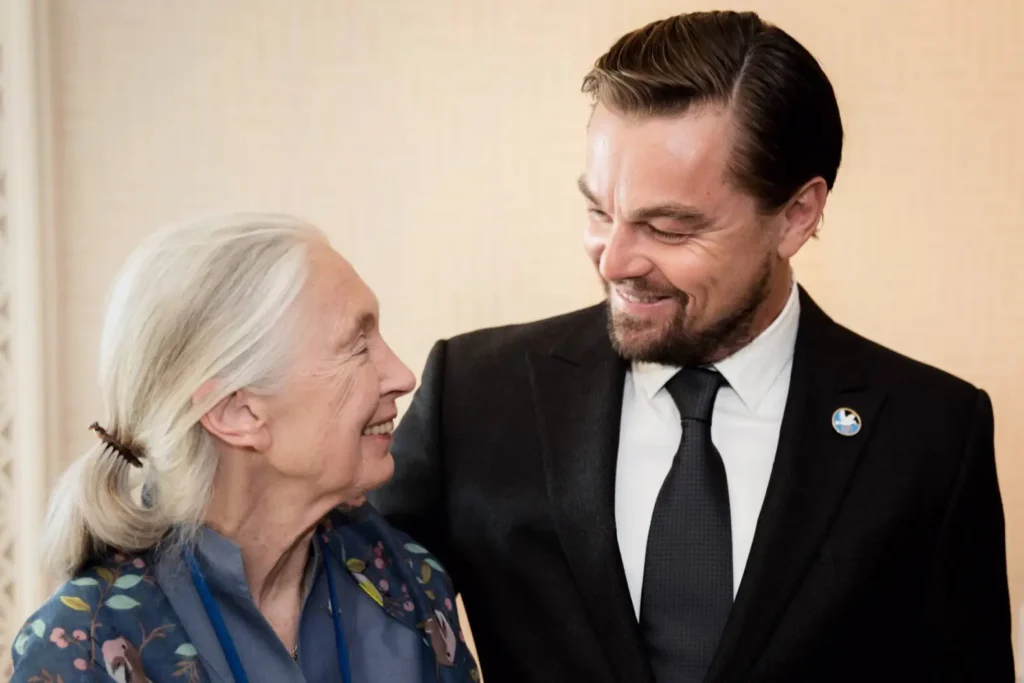
Leonardo DiCaprio paid a heartfelt tribute to his “dear friend” and legendary primatologist Jane Goodall, who died at the age of 91. He called her “a true hero for the planet” and an inspiration to millions. DiCaprio highlighted Goodall’s groundbreaking research on chimpanzees in Tanzania, which transformed human understanding of our closest relatives and reminded us of our deep connection to all life. He praised her lifelong dedication to protecting the planet and the ecosystems wild animals inhabit, as well as her tireless efforts to awaken generations to the wonders of nature.
DiCaprio also reflected on their long friendship and shared commitment to conservation and environmental advocacy. He recalled her energy in engaging younger generations with hope and responsibility, inspiring millions to care and act. His tribute ended with the message that his last words to her were “You are my hero,” and a call for everyone to carry on her legacy by supporting the Jane Goodall Institute and other conservation efforts. DiCaprio and Goodall both served as United Nations Messengers of Peace and collaborated on environmental projects, including a 2024 film titled “Howl.” The actor is also involved in producing a feature film about Goodall’s life for Disney, expected to be the first portrayal of her on screen.
How did Jane Goodall transform chimpanzee research
Jane Goodall transformed chimpanzee research in several groundbreaking ways that changed how humans understand our closest living relatives:
- She was the first to show that chimpanzees use tools, a behavior previously thought to be uniquely human. In 1960, she observed a chimpanzee, David Greybeard, stripping leaves off a twig to use it to fish termites out of a mound, demonstrating not just tool use but tool making. This discovery forced scientists to reconsider the definition of “tool” and what it means to be human.
- Goodall revealed that chimpanzees are omnivorous rather than strictly herbivorous. She documented them hunting and eating small animals like bush pigs and colobus monkeys, often engaging in cooperative hunting. This showed complexity in their feeding behavior and social organization.
- She observed complex social behaviors in chimps, including affectionate gestures like hugging, kissing, and patting, and emotions such as joy and sorrow. Her work emphasized that chimps have personality and form lifelong bonds within communities.
- Goodall documented aggressive behavior, including chimpanzee “wars” between groups and lethal violence, showing parallels with human conflict.
- She named the chimpanzees she studied instead of giving them numbers, highlighting individuality and challenging traditional scientific detachment.
- Her research emphasized the deep connection and similarities between humans and chimpanzees, providing insights into emotions, culture, and social structures, and shifted scientific understanding about what behaviors distinguish humans from other animals.
- Over six decades, her long-term research at Gombe Stream National Park in Tanzania established a fundamental scientific knowledge base that supports chimpanzee conservation and inspires environmental stewardship worldwide.
In sum, Jane Goodall revolutionized primatology by demonstrating tool use, complex social and emotional lives, violence, and culture in chimpanzees, reshaping the scientific and public perception of these animals and their kinship with humans.
Jane Goodall transformed chimpanzee research by pioneering detailed, long-term field studies at the Gombe Stream National Park in Tanzania, where she observed behaviors that challenged previous scientific assumptions. She was the first to document chimpanzees making and using tools—such as fishing for termites with sticks—showing that tool use was not unique to humans. This discovery led to the redefinition of what it means to be human, as chimps were seen making and using tools in complex ways. Goodall also revealed that chimpanzees are omnivorous, hunting and eating meat, contrary to the prior belief they were strictly herbivorous.
Furthermore, Goodall observed rich social behaviors: chimps live in communities with familial and tribal-like structures, experience emotions, and sometimes engage in violent conflicts similar to wars. She uniquely named the chimps she studied, rather than numbering them, emphasizing their individuality. Her approach was revolutionary because she portrayed chimpanzees as sentient beings with cultures, which was radically different from the detached, objective approach typical in animal research before her.
Goodall’s work fundamentally shifted primatology, inspired conservation efforts, and expanded insights into human evolution and behavior, based on our closest living relatives. Her research and advocacy through the Jane Goodall Institute continues the longest-running chimpanzee field study and supports global conservation and education programs.
What were Jane Goodall’s key discoveries about chimp behavior
Jane Goodall’s key discoveries about chimpanzee behavior include:
- Tool Making and Use: She was the first to observe chimpanzees making and using tools, such as fishing for termites with sticks. This was revolutionary because tool use was previously thought to be uniquely human, forcing a redefinition of what it means to be human.
- Complex Social and Emotional Life: Goodall found that chimpanzees have personalities, emotions, and social bonds similar to humans. She observed behaviors like hugs, kisses, pats on the back, and tickling, demonstrating affectionate and supportive family and community bonds.
- Aggression and War: She discovered a darker side of chimpanzee nature, including territorial aggression and lethal violence. An example is the “Gombe Chimpanzee War” from 1974 to 1978, where chimpanzees from one group systematically killed adult males of another group to take over their territory.
- Hunting and Meat Eating: Contrary to the belief that chimps were strictly vegetarians, Goodall discovered they hunted and ate smaller primates like colobus monkeys systematically.
- Communication and Culture: Goodall observed sophisticated communication involving specific vocalizations and gestures, and she noted that chimpanzee communities have culture-like traditions and individual members with dominant and subservient roles, kindness and cruelty.
- Individual Recognition: She uniquely named the chimpanzees she studied rather than numbering them, emphasizing their individuality and personalities, which was unconventional at the time.
These discoveries transformed scientific understanding of chimpanzees, showing them as sentient, complex beings with behaviors and cultures notably parallel to humans.
How did Goodall document tool use in chimps
Jane Goodall documented tool use in chimpanzees through long-term, direct, careful observation at Gombe Stream National Park, beginning in 1960. One of her earliest and most famous discoveries was watching a chimpanzee named David Greybeard strip leaves off a twig and use it to fish termites out of a mound, demonstrating that chimps made and used tools for foraging. This was profound because tool-making was considered a uniquely human trait before her findings.
She patiently acclimated the chimpanzees to her presence, allowing her to observe their behaviors closely over extended periods. Her detailed notes and documentation showed how chimps modified objects in their environment, like sticks, to serve practical purposes. This challenged the existing scientific definition of what a tool is and redefined the boundary between humans and animals. Her mentor, Louis Leakey, was thrilled with the discovery, which helped fuel her continued research and gain wider attention, including support from National Geographic.
Her approach emphasized the individuality of each chimpanzee and careful, immersive fieldwork rather than distant or experimental conditions. These insights transformed primatology and human evolutionary theory by showing that tool use and complex behaviors are shared between humans and chimpanzees, suggesting a closer evolutionary relationship.
Request primary sources or field notes showing her tool-use observations
Primary sources or actual field notes from Jane Goodall’s chimpanzee tool-use observations are not typically fully publicly available for direct access, as they are original research documents often held by institutions or archives such as the Jane Goodall Institute or universities. However, Goodall has published many detailed reports, books, and scientific papers based on her meticulous field notes from Gombe Stream National Park.
For direct insight into her observations, one can consult:
- Goodall’s original research publications and books like “In the Shadow of Man” and “The Chimpanzees of Gombe,” which relay her detailed firsthand observations and discoveries.
- The archives and resources of the Jane Goodall Institute offer historical data, and may house or provide access to selected primary documents and recorded field notes.
- Scientific journals from the 1960s onward that published her early and ongoing studies.
These materials collectively serve as primary sources documenting her original empirical evidence of chimpanzee tool use and behavior.
For examples and guidance on how field notes typically capture such observational research, there are educational resources and examples of observational field notes in general research contexts. To access Jane Goodall’s original field notes or unpublished primary sources, contacting the Jane Goodall Institute or visiting academic archives may be necessary.
Provide links to Jane Goodall’s original field notes on tool use
Jane Goodall’s original field notes on chimpanzee tool use are not fully publicly available as raw documents, but several authoritative sources and collections provide insight into her pioneering observations and documentation:
- An article from MasterClass details how Goodall first observed a chimpanzee named David Greybeard using a stick to fish termites, marking a breakthrough in understanding tool use among apes. This describes her field approach and her note-taking methodology:
https://www.masterclass.com/articles/jane-goodall-explains-chimpanzee-tool-use - Sentient Media offers an in-depth explanation of her meticulous note-taking and immersive fieldwork approach, discussing how her original data changed the scientific view of animal behavior:
https://sentientmedia.org/jane-goodall-animal-research/ - A Substack article by Jillian Hess discusses Jane Goodall’s note-taking practices and includes excerpts, providing a glimpse of how her original notes looked during her research at Gombe:
https://jillianhess.substack.com/p/ps-jane-goodalls-chimpanzee-notes - An AOL article references Goodall transcribing field notes by lamplight in the early 1960s at Gombe Stream National Park, reflecting how she carefully documented behavior:
https://www.aol.com/articles/jane-goodall-pioneer-discovered-chimpanzees-185411559.html - The Jane Goodall Institute website offers general background and may provide archival access or pointers to original research collections related to her work:
https://janegoodall.org/our-story/about-jane/
For direct access to raw field notes, contacting the Jane Goodall Institute or academic archives housing her original materials may be necessary, as such primary documents are typically preserved under controlled access due to their historical and scientific value. These links provide authoritative secondary sources summarizing and quoting from her primary observational data on chimpanzee tool use.

